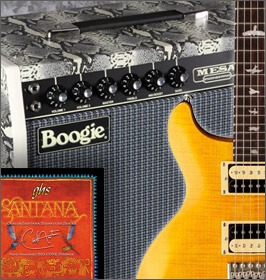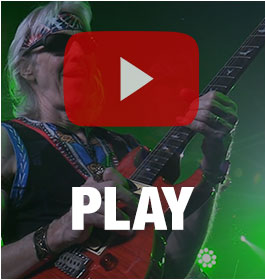Between the last of the original Santana albums (Santana by Santana, Abraxas, and Santana III) and the commercial success of Moonflower, Carlos recorded a number of records during which he was experimenting with styles, genres, band members, and more.
First was Caravanserai, with its awkward interpretations of current jazz-rock fusion. Next came Love, Devotion, Surrender: his unlikely pairing with fusion guitarist John McLaughlin (Mahavishnu Orchestra). Finally, he mixed in some of the pop roots with which his career had been launched, and recorded Welcome.![]()
Santana returns to his roots

Featuring many new band members and musical guests, Welcome, while somewhat uneven, was in many ways a step up. Carlos Santana managed to fuse the disparate elements which had made up his history into a more pleasing whole. Although the album lacks any memorable hit singles, it does, in general, follow more of a mainstream song formula — a format which fits Santana well. Two band members from the original lineup are percussionist Jose “Chepito” Areas, and drummer Michael Shrieve. Joined by Conquero James Mingo Lewis, the two combine forces to bring the strength of Latin percussion back to the band; Welcome has a strong rhythmic element that bolsters almost every track.
Blending musical influences
Jazz saxophone legend John Coltrane is one of the most prevalent influences on the album. His composition, “Welcome,” is the title track. In addition, his widow, Alice Coltrane, provides keyboards to several tracks, as well as the arrangement for the opening cut: “Going Home,” by classical composer Antonin Dvorak.
Additional keyboards and composition are provided by keyboardists Richard Kermode and Tom Coster. Kermode teamed up with Santana to rearrange the title cut from the Santana/McLaughlin collaboration “Love, Devotion, and Surrender,” adding vocals and tightening up the arrangement. He also co-wrote “Yours Is The Light,” with Michael Shrieve — offering a catchy Brazilian flavor, and featuring one of the few extended solos by Carlos.
Finally, Kermode penned “Light of Life” with Santana and Tom Coster. This song contains an obvious nod to McLaughlin, but remains mostly in the pop realm, with the help of R&B vocalist Leon Thomas.
Tom Coster wrote “When I Look Into Your Eyes” with Michael Shrieve — a song with nods to Mahavishnu Orchestra as well as pop staples Chicago. Coster also helped refurbish the Herbie Mann tune “Mother Africa” with Carlos, featuring on of the other solos by Carlos, as well as an homage to Coltrane by saxophonist Jules Broussard.
Rounding out the album is the only extended jam song: “Flame Sky,” by Coster, Santana, and bassist Doug Rauch. Interestingly, the last two thirds of the song find Carlos Santana and John McLaughlin trading riffs — both so obviously influenced by the other that at times it’s hard to tell them apart!
Final Notes
All in all, Welcome is a well-crafted album. The ’70s R&B sound that dates it somewhat is comfortably offset by the prominence of percussion, tight song structures, and tasty, restrained playing. A Santana album well worth having in any collection.



